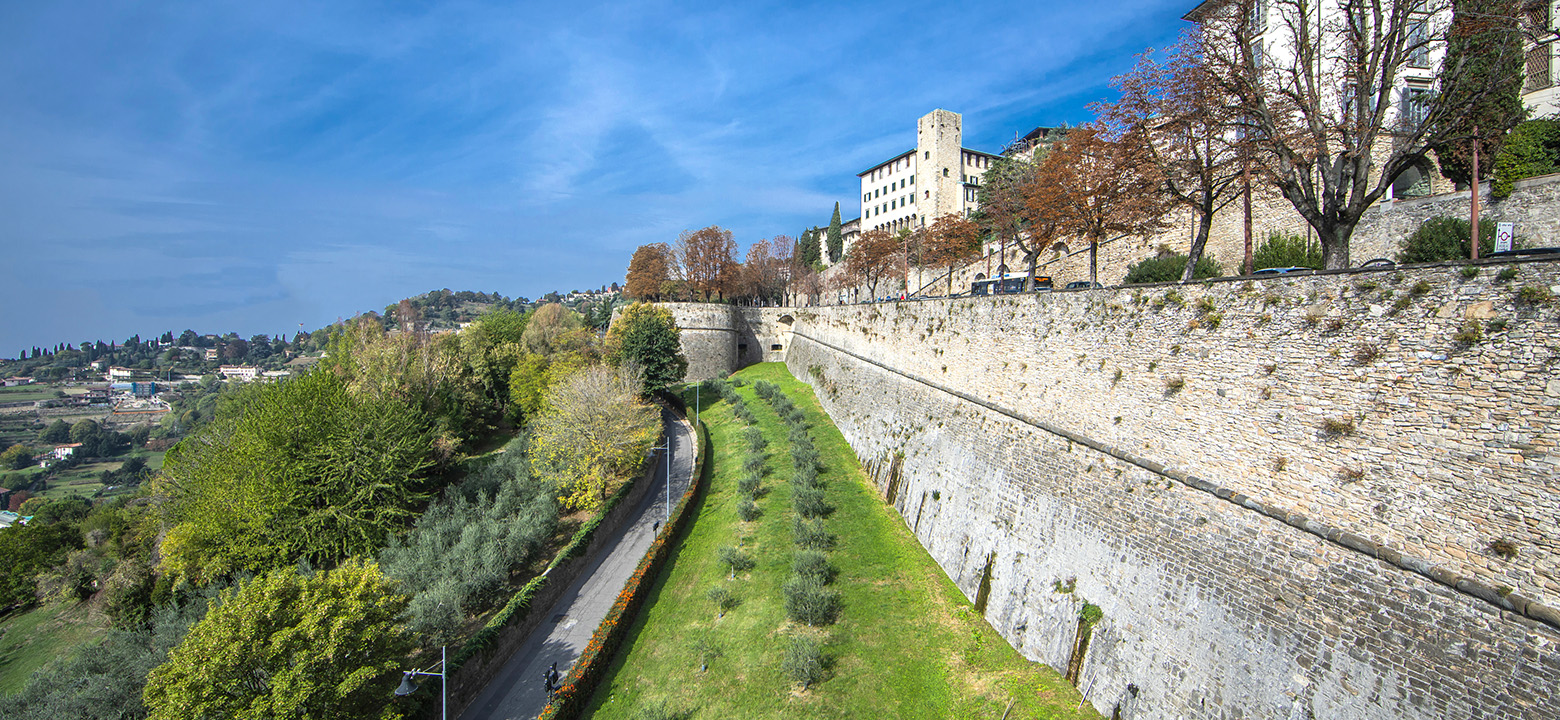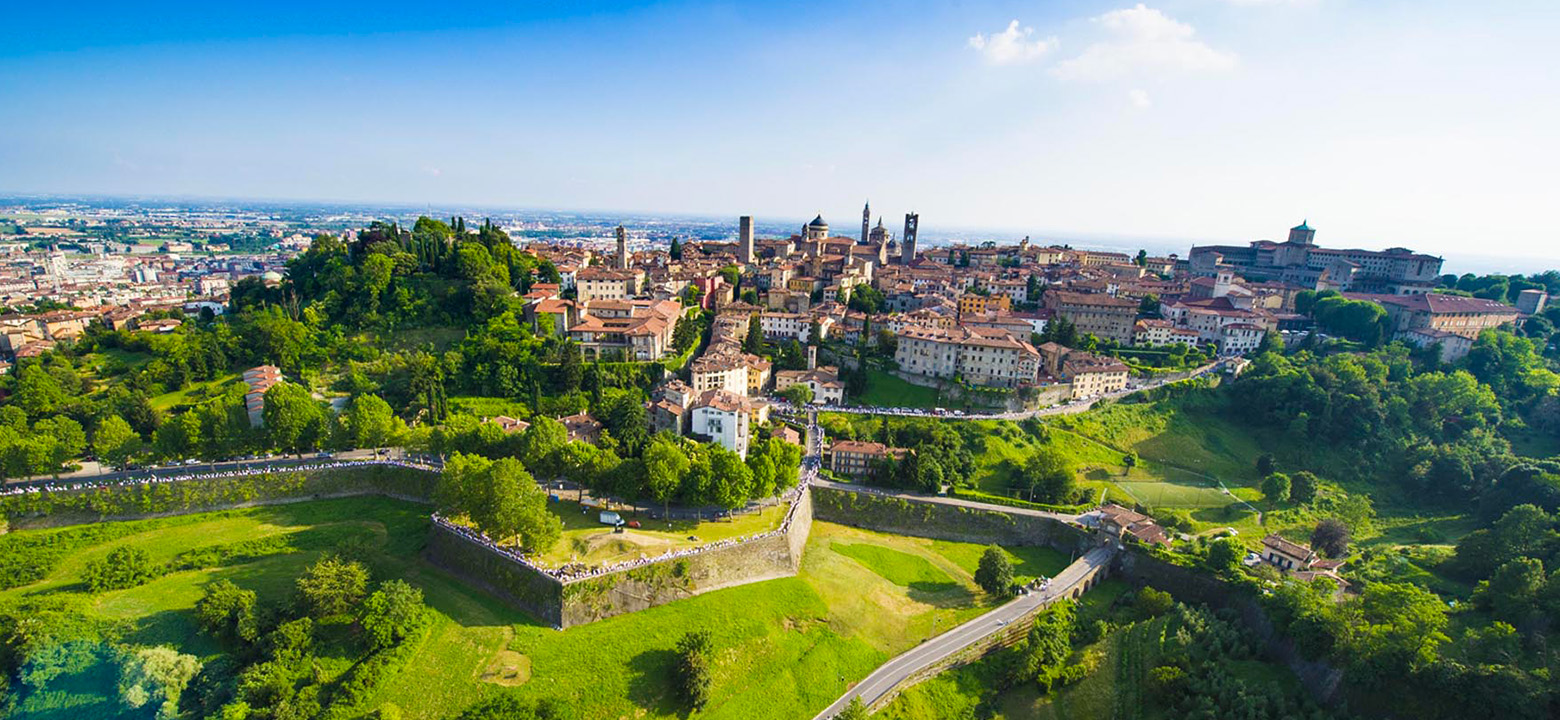Bergamo would not be the same without its imposing Venetian Walls: more than six kilometers of track, a place of romantic walks, the scene of marvelous sunsets, have guarded for more than four centuries the beauty of Upper Town.
The inestimable artistic and cultural value of the Walls is also evidenced by their UNESCO recognition; in fact, they are inscribed on the World Heritage List.
The History of the Venetian Walls
Built in 1561 by the Republic of Venice, Bergamo’s Venetian Walls represent an extraordinary example of Renaissance military architecture. They were built with the aim of protecting the city from enemy attacks, and today, more than four centuries later, they still stand majestic, perfectly preserved, completely embracing the perimeter of the Upper Town with their approximately 6 kilometers in length.
Surprisingly, these walls were never involved in actual sieges, which contributed to their integrity. Their grandeur and sophistication make them a symbol of the city’s glorious past, not only because of their defensive function but also because of their architectural elegance, which still captivates thousands of visitors every year.
The entire complex includes 14 bastions, 2 platforms, 4 monumental main gates (St. James, St. Augustine, St. Lawrence, and St. Alexander), 2 powder magazines, about 100 openings for gun ports, and a dense underground system of tunnels and burrows, which constituted an advanced strategic infrastructure for the time.
The construction of the Venetian Walls required considerable sacrifices: more than 250 buildings were demolished to make way for the wall, including eight religious sites of great value, such as St. Alexander’s Cathedral and the Dominican convent of St. Stephen. Tensions between civil and religious authorities were such that as many as eight excommunications were issued during the works. Nevertheless, the result was one of the most impressive and best-preserved fortifications in Europe.
A Unique UNESCO World Heritage Site
In 2017, the Venetian Walls were officially recognized as a UNESCO World Heritage Site, within the serial and transnational site “Venetian defense works between the 16th and 17th centuries: State by Land – State by Western Sea”. This international recognition highlights the strategic, architectural and landscape value of the defense system built by the Serenissima.
The Walls are now a beloved place for citizens and tourists alike: walkable on foot or by bicycle, they offer spectacular views of the plain below, the Orobian Pre-Alps skyline and unique glimpses of the city.
For an even more immersive experience, it is possible to visit the cannoniera (embrasures) of San Giovanni, now open to the public during events and guided tours. Entering these underground spaces provides an up-close understanding of the ingenuity with which military defense was organized in the 16th century.
Curiosities
Intriguing curiosities enrich the history of the Walls: some parts of the fortification date back to Roman times and are still visible in Vàgine Street and at the Santa Grata Convent. These remains were almost completely replaced during the work of the 16th century, creating a new perimeter that did not include earlier elements.
Today, the Venetian Walls represent much more than a military construction: they are an authentic open-air museum, integrated into an urban context of rare beauty. Walking along them offers not only a dip into history, but also an opportunity to admire the surrounding nature, the colors of the seasons and the timeless charm of Upper Town.
Those who visit Bergamo cannot miss the opportunity to explore them: every step tells a story, every view gives emotions. The Venetian Walls are the perfect place for those seeking an experience that combines culture, beauty and memory.









